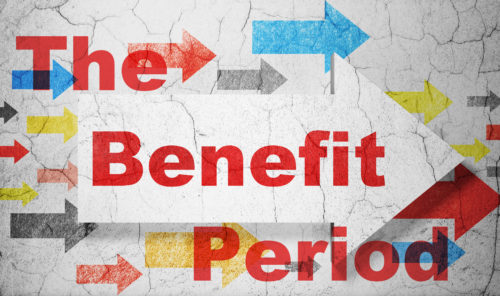
Understanding Individual Disability Insurance Lingo, Language, Benefits, and Terminology
MANY YEARS in the income protection business allows me to share with you some insights on how the disability marketplace has changed since the early ’80s. The three major players back then were Provident Life & Accident, Union Mutual, and Paul Revere. They are now combined into one company called UNUM. Oh how they sliced and diced each other up with liberal policy definitions (own occupation for lifetime), lower premiums (men and women paid the same premiums), aggressive issue and participation limits especially for doctors, 30 day waiting periods were common as were lifetime benefits for an illness or injury prior to age 65 with a full benefit period even lifetime for mental and nervous claims. They couldn’t write the business fast enough.
Doctor’s were making tons of money and always the #1 target market and purchaser of disability insurance. It was the golden age of being a physician until managed care (HMO’s and PPO’s) changed their world in the early ’90s. Talk about stress! Doctor’s incomes were substantially reduced and down the hall, they went to see their therapist “friend or golfing buddy” who recommended they go out on a stress-related disability claim.
The disability industry survived. How they would have loved to change premiums on blocks of guaranteed-renewable non-cancellable disability premiums due to claims, which they could not do? I’ll explain guaranteed-renewable and non-cancellable below. The fallout was a nervous period of time where the companies had real anxiety about individuals with mental / nervous issues, and submitting an application would have meant an outright decline.
Here’s How The Current Disability Marketplace
Has Evolved and Changed

♦
No more lifetime benefit benefits available. Maximum benefit period Age 70.
♦
A few companies offer a 30-day elimination period with the industry standard being 90-days.
♦
You will find the majority of disability companies issue a 2 to 5-year benefit period with one company, in particular providing a full benefit period for mental or nervous claims. I believe the disability business would have fared so much better in the 80’s if a 2 to 5-year benefit period for mental or nervous claims had been the norm. Fortunately, they all have a better understanding how to underwrite individuals who seek therapy for stress and anxiety.
♦
They now offer different definitions for total disability as well as non-cancellable guaranteed renewable and guaranteed renewable policies, which also helps to lower premiums and provides disability insurance to more individuals in various occupation classes.
♦
Disability premiums are sex distinct. Women pay more than men due to a higher frequency of disability claims. More insights in “Understanding The Difference Between Sex-Distinct or Unisex Premiums”.

What to Look For?
Keys To Good Income Insurance Protection
– The Renewability Provisions –
GUARANTEES, GUARANTEES, GUARANTEES!
This is what sets apart a good income protection policy during your income earning years
and makes it a valuable contract to own throughout your profession or career.




The BEST type of individual disability contract to own should be NON-CANCELABLE & GUARANTEED RENEWABLE to age 65,
or just NON-CAN for short.
BECOME A NON-CAN FAN!
♦
This means the insurance company cannot CHANGE, ALTER, or CANCEL the policy prior to age 65 except for non-payment of premiums.
♦
This means your PREMIUM is guaranteed to remain level at the age you’re approved and cannot be changed prior to age 65. This is a great guarantee to own.
♦
This means the policy is PORTABLE and will follow you wherever your career or profession takes you prior to age 65. Think of it like this. A one-way contract that you control not the insurance company!
The other type of individual disability contract is GUARANTEED RENEWABLE to age 65 means the insurance company cannot CHANGE, ALTER, or CANCEL the policy prior to age 65 except for non-payment of premiums. This contract like above the policy is PORTABLE and will follow you wherever your career or profession takes you prior to age 65. THE BIG DIFFERENCE. The insurance company reserves the right to increase premiums on all insureds covered under a particular policy series in the approved state where the policy was issued. Premiums are PROJECTED to remain level to age 65 NOT GUARANTEED to remain level to age 65. THE MAIN POINT HERE. It’s not that the company will raise premium rates. It‘s that they can, and you don’t know what the premium will be in the future should the company need to change premium rates due to higher than anticipated claims. Rate increases must be filed and approved by the department of insurance. Rate increases do not occur or increase each year. You cannot be singled out for an increase because of a change in your age or health. Not recommended for someone early in their profession or career, maybe an option for someone in their 50’s considering an individual disability policy. Remember premium rates are subject to change at age 65.
What happens at age 65? Can You Continue Coverage? The company will either change the premium rate on your 65th birthday or on the policy anniversary following your 65th birthday. Premiums are projected to remain level and may increase each year depending on the company. The maximum benefit period is usually 24 months for a total disability only with all other benefits removed from the policy. The policy depending on the company may be conditionally renewable to age 75 or for life as long as you are actively working at least 30 hours per week. When renewing your policy, you may need to confirm full-time employment and pay the premium due for your age at that time.

Reading the fine print tells you some very important information. How does the policy define disability, how you qualify, what your benefits will be, what other terms and conditions apply, and more?

What’s The Definition of Total Disability?

The definition of a TOTAL DISABILITY is the KEY policy provision in any type of disability insurance. This definition will define and determine your eligibility necessary to qualify and receive full monthly disability benefits.
LANGUAGE MEANS EVERYTHING!
You have to look for the most favorable definition of how a policy defines total disability based on your occupation.
A highly skilled surgeon or dentist is going to need, and want a more favorable definition for a total disability than someone in an occupation with more physical duties such as a blue collar worker. They both need disability insurance, but the insurance company must categorize the risk properly with an appropriate definition of total disability for each occupation.


These specialized occupations require the best definition for a total disability, which will allow them if they can’t perform the material and substantial duties of their occupation to receive disability benefits or receive their full monthly disability benefits even if they are working in another occupation and earning an income.
The exact definition of disability varies among companies, policies, occupations and the state the policy is issued.
Companies will market having true OWN OCCUPATION as a must, and I would agree if it’s offered for your highly skilled occupation class include it in the policy.

Does anyone know what will disable you? No one knows until a disability strikes!
It’s not like life insurance where death is certain and there are no questions. There are so many factors and circumstances to a disability claim and what will disable you from working and not performing the duties of your occupation.
This can be very subjective depending on the disability and the motivation of the individual.
Some can’t work at any occupation no matter how motivated they are due to their disability, and some depending on the disability want to try and get back to work in another occupation, earn an income and still receive their monthly disability benefits. True OWN OCCUPATION is the answer.
This is such an important feature for a highly skilled, highly motivated and driven professional, e.g., doctor, dentist, executive or attorney, who is likely to seek work in some other capacity. Whether you can or can’t work in another occupation, there is no doubt owning such a valuable policy provision is beneficial to protecting your income now and in the future.
These are the (4) most common types of definitions for defining a total disability:
(1) True Own-Occupation
(2) Transitional Own-Occupation
(3) Modified Own-Occupation
(4) Any Occupation

What does this industry jargon actually mean?
Education goes a long way, and I will help you understand the differences between True Own-Occupation, Transitional Own-Occupation, Modified Own-Occupation, or Any Occupation especially when it comes to these definitions and how they can play out in disability claims.
(1) TRUE OWN-OCCUPATION: The HIGHEST LEVEL and MOST VALUABLE definition for total disability or totally disabled because is it much more favorable to the insured. Though this definition is PREFERRED, it’s more expensive, and not available for all occupation classes.
True Own-Occupation can help professionals protect the significant investment of money, time and effort they’ve made in their education and training. It’s a contractual provision that defines the most favorable wording of total disability or being totally disabled. If the insured cannot perform the material and substantial duties of his or her own occupation due to sickness or injury, the monthly disability benefit will be paid even if income is earned in another occupation. Plus the insurance company will recognize a medical or dental specialty as your occupation.
Here’s an example, you were a surgeon before you seriously injured and lost feeling in your right hand causing your disability, and after you’re disabled and not working you find a new occupation as a doctor in a pharmaceutical company or a professor at a medical university. You’d still receive your monthly disability benefits and income earned in this new occupation.
A long-term illness or injury may prevent a highly skilled professional from working in their specific area of medicine or dentistry forever. True Own-Occupation provides you with the flexibility to work in another occupation, if you can, without having that decision impact your policy benefits.
HERE’S THE CALIFORNIA OWN-OCCUPATION DEFINITION:
You will be considered totally disabled if, as a result of sickness or injury, you are unable to perform with reasonable continuity the substantial and material acts necessary to pursue your usual occupation in the usual and customary way.
If you have limited your usual occupation to the performance of the substantial and material duties of a single medical or dental specialty, the company will deem that specialty to be your usual occupation.
Your usual occupation means the occupation(s) you are actively engaged and regularly performing when your disability begins. Important! This is your occupation at the time of disability not at the time of application.
NOTE: There may be slight variations depending on the insurance company.
(2) TRANSITIONAL OWN-OCCUPATION: This definition of disability for OWN-OCCUPATION mirrors the above except for one important difference. You’re able to work in any other occupation, the earnings from your new occupation MAY or MAY NOT reduce your monthly disability benefits.
HERE ARE A COUPLE EXAMPLES TO CONSIDER:
♦
A 45-year-old dentist making ($30,000 Monthly / $360,000 Annually) in earned annual income and has a permanent disability. He files for a disability claim with the insurance company. The policy has a transitional own occupation definition of total disability. After meeting the requirements to receive disability benefits of $12,000 monthly, the disabled insured becomes a V.P. at a large dental products marketing manufacturing company and now earns a new salary of $15,000 Monthly / $180,000 Annual.
His new total income would be $12,000 Monthly / $144,000 Annualized (disability benefits) + $15,000 Monthly / $180,000 Annualized (new earned income) = $27,000 Monthly / $324,000 Annualized. He did not exceed his $30,000 Monthly / $360,000 Annualized (original earned income prior to his disability). Nothing changes under his monthly disability benefits. He still receives his $12,000 a month in disabilty benefits with no reduction.
♦
Same situation but he is good at what he’s doing, sales are up and is now earning $19,000 Monthly / $228,000 Annualized. His new total income would be $12,000 Monthly / $144,000 Annualized (disability benefits) + $19,000 Monthly / $228,000 Annualized (new earned income) = $31,000 Monthly / $372,000 Annualized. He has exceeded his $30,000 Monthly / $360,000 Annualized (original earned income prior to his disability) by $12,000. The insurance company will reduce his monthly disability benefits down ($12,000 divided by 12 = $1,000) to ($12,000 – $1,000 = $11,000 each month).
The idea of a transitional own occupation disability is to make you whole up to 100% of your original earned income prior to your disability.
IMPORTANT POINT: Any additional income you are receiving e.g., social security disability, group disability benefits or any other income will reduce your monthly disability benefits if you exceed your prior income.
THE DIFFERENCE: TRUE OWN-OCCUPATION PAYS YOU REGARDLESS OF WHAT YOU EARN IN ANOTHER OCCUPATION AND DOES NOT REDUCE YOUR MONTHLY DISABILITY BENEFITS BY ANY OTHER INCOME.

Watch out for how companies redefine or modify their definition of total disability. This can result in a claim ending sooner rather than later.
(3) MODIFIED OWN-OCCUPATION: This next variation tightens the definition of disability a little more by stipulating that your monthly disability benefit is paid only if you can’t perform the material and substantial duties of your occupation and not working in any occupation.
Under this definition, the insurance company will only pay your monthly disability benefit if you can’t work in your previous occupation and you’re not working anywhere else. If you get a job and start collecting a paycheck, your benefits will stop.
The limitation here is if you can work in another occupation under this definition of disability you will not be considered totally disabled and your monthly disability benefits will stop.
Note: Depending on the company and policy, you may be eligible for a residual (partial) disability benefit based on a loss of income.

(4) ANY OCCUPATION: This is the most restrictive and least favorable definition of disability usually found in employer-provided group long-term disability, inexpensive association coverage or cheap disability insurance offers.
This type of coverage most commonly uses the OWN-OCCUPATION standard for an initial period – – usually, 24 months, although longer periods are available, even to age 65 for certain occupations or classes of employees.
During the OWN-OCCUPATION period, the plan pays monthly disability benefits if the person cannot perform the material and substantial duties of the occupation in which the person was employed when he or she became disabled.
The OWN-OCCUPATION period is customarily followed and redefined by the more restrictive “ANY OCCUPATION” standard, which limits monthly disability benefits if the insured is able to perform ANY job functions for which he or she might be qualified based on education, training, and experience.
Who determines and decides if you can go back to work in ANY OCCUPATION? The claims department at the insurance company. Who benefits? The insurance company!
Here’s an example. A software engineer suffers a long-term disability and starts to receive benefits under their group disability. The coverage offers an OWN-OCCUPATION definition that states own occupation for the first 2 years of claims – after that – ANY OCCUPATION. This engineer suffers from carpal tunnel syndrome which prevents him from working specifically as a software engineer. After two years of receiving benefits – the insurance company has the right to re-examine this claimant’s disability and deem whether they are qualified and able to work in ANY OCCUPATION based on education, training, and experience.
If the insurance company claims department believes he can’t work as a software engineer, but can work in another occupation – they will have the right to stop his disability monthly benefits based on this definition of disability.
Disability insurance with this definition of disability should at the very least be supplemented with a better individual policy or replaced entirely. This definition basically leaves the determination of whether or not you are disabled up to the insurance company.
Learn more in “‘I’m Covered, I Have Group LTD!’ A Real Cause For Concern. What You Need To Know!”

RESIDUAL DISABILITY BENEFITS: WHAT YOU NEED TO KNOW!

Disabilities are not just a TOTAL DISABILITY. Since most illnesses or injuries do not appear or disappear overnight, it’s fair to state that the probability of becoming residually or partially disabled prior to or after being TOTALLY DISABLED is worthy of understanding and why this benefit is so important.
BOTH (TOTAL + RESIDUAL) MUST BE INCLUDED IN A GOOD INDIVIDUAL POLICY AND USUALLY ARE WRITTEN THIS WAY. Residual disability benefits can be added at an additional cost or it may already be included in the base policy.
QUALIFYING FOR RESIDUAL DISABILITY BENEFITS – ELIGIBILITY REQUIREMENTS
Loss of Income: One must be working but, solely due to an injury or sickness, experience a loss of income usually greater than 15% or 20%.
Loss of Time or Duties: One must be working but, due to an illness or injury suffers a loss of time or duties. The disabled insured can work but not full time or is unable to perform at least one or more of the material and substantial duties of his / her occupation.
Many of the individual disability insurance policies available today will require a loss of time or duties and subsequently suffer a loss of income with a few that require only a loss of income trigger. The most favorable and consumer friendly-residual disability benefit will simply require a loss of income of 15% or more, solely due to an illness or injury, for you to be considered residually disabled.
How Residual Disability Benefits are Calculated: Your residual benefits will be based upon on a loss of earnings. A percentage of current lost income in relation to what you earned prior to your disability.
Proportionate Benefit: Proportionate benefits are calculated based on the percentage of lost income. For example, an individual who earns $100,000 annually ($8,333 monthly), owns an individual policy with $5,000 of monthly benefit and experiences a 20% loss of income could expect to receive $2,500/month (50% of $5,000).
The benefit will pay proportional to the loss of income except during the first 6 months of a residual disability an income loss between 20% and 50% will pay no less than 50% of the monthly disability benefit ($5,000). After the initial 6 months if the percentage loss is above 20% and below 50%, the percentage loss is paid, e.g. 30% = $1,500.
If the percentage loss is paid between 50% and 75%, e.g. 60% = $3,000. Should the loss be greater than 75% then 100% of the monthly disability benefit is paid = $5,000.
Loss of Income Only: The Residual Disability Benefit with a Loss of Income only calculates the benefit based on the total loss of income experienced, not to exceed the monthly benefit amount. Using a similar example, an individual who earns $100,000 annually ($8,333 monthly), owns an individual disability policy with $5,000 of monthly benefit and experiences a 50% loss of income could expect to receive $4,166/month (50% of $8,333). This is a dollar-for-dollar replacement benefit for the first 12 months, and if the residual disability continues beyond the first 12 months the individual is eligible for a residual benefit, based on a proportionate loss of income thereafter.
NOTE: Some companies will use a loss of income initially for 6 months then go to a proportionate benefit thereafter.
Indexing: A policy provision that increases the insured’s pre-disability earnings every year according to a given formula tied to the CPI (Consumer Price Index), so that residual disability benefits will not lose purchasing power because of inflation. This additional benefit is recalculated on an annual basis.
Recovery Benefits Following a Disability: A recovery benefit is payable if you are no longer disabled and you return to work full time immediately following a disability for which benefits were paid, yet you continue to suffer at least a 15 to 20% loss of income due to the injury or sickness that caused the disability.
– THE ELIMINATION OR WAITING PERIOD –

Your Elimination Period is also known as a Waiting Period. It’s the consecutive number of days from the onset of a disability (illness or injury) that must elapse before you are eligible for benefits. Benefits will not accrue or be payable during this period of time. Typical waiting periods are 30, 60, 90, 180, or 365 days. The most common is a 90-day waiting period.
When does the waiting period start on a claim? It doesn’t start on the date you file a claim, but rather the date of the injury or illness diagnosis that prevents you from working. For example, if you were in a car accident, left unable to work and filed a claim 30 days after the accident, the waiting period would begin the day of the accident.
When would you receive your first payment? Consider the above example, if a policy indicates a 90-day waiting period, you qualify for monthly disability benefits on day 91 and will receive a benefit check at the end of the month. Therefore, a 90-day waiting period means you’re 4 months away from receiving initial monthly disability benefits. Even though this is a long period of time and a hardship for many, having benefits paid to you for many years thereafter will prove to be a very smart financial decision, and why disability insurance is so important.
What waiting period is right for you? So what’s the right elimination period length for you? I would look at your personal and financial situation.
(1) Do you have short-term disability benefits through your employer? You should consider a waiting period that follows the end of your short-term disability benefits. Your long-term disability insurance should pick up where the short-term insurance leaves off.
(2) Do you have financial resources, savings or emergency funds that can cover your monthly expenses and for how long?
(3) Do you have a spouse whose income could support both of you when you’re not working and for how long?
(4) Balance everything out with an affordable premium would then be my emphasis to you.
TYPICAL WAITING PERIODS:
30 Days (1 Month) *Shortest Available
60 Days (2 Months)
90 Days (3 Months) *Most Popular
180 Days (6 Months)
365 Days (1 Year)
720 Days (2 Years) *Longest Available
PLANNING TIP:
(1) I want to point out while the cost of having a shorter waiting period, 30 or 60 days, is higher, you will find that going with a longer elimination period beyond 90-days does not save you enough money for the income risk you take while waiting for future monthly disability benefits. Even though the policy may be less expensive to own a 90-day waiting period tends to be the better option.
Consider 90 and 180 days (3 months of benefits you’re waiting to receive), and 90 and 365 days (9 months of benefits you’re waiting to receive).
It is not to say a longer waiting period doesn’t make sense in some situations especially when an employer provides short-term disability benefits.
(2) If you have a short-term disability plan through your employer unless you think you will be with this employer for an entire career, keep in mind that 180 days or 365-day waiting period you selected on your individual plan will follow you throughout your career. Will you have a future employer providing you with short-term disability benefits, or what happens if you start your own business and become self-employed with no short-term disability benefits? The point is you can initially select a 90-day waiting period even if you are eligible to receive short-term disability benefits. Remember this policy will follow you throughout your working life.

IMPORTANT TERMS & CONDITIONS WITH THE WAITING PERIOD THAT CAN BENEFIT OR HARM YOU AT CLAIM TIME!
(1) Policies that allow your waiting period to be met by either a total or residual days of disability. You will find this favorable policy provision in good individual disability policies. This is much more favorable to you at claim time than a policy that requires a total only disability to satisfy the waiting period usually found in group long-term disability.
(2) Policies that allow for the days of a waiting period to be accumulated rather than continuous days. You find this favorable policy provision in good individual disability policies.

Why is this so important to you at claim time? You want to be able to accumulate the days of disability over a stated period of time, e.g., you have a 90-day waiting period and your policy allows for a longer period of time (180 or 365 days) to accumulate your days of disability to satisfy your waiting period. This is much more favorable to you at claim time than coverage requiring 90 continuous days without interruption to meet your waiting period before you’re eligible to receive benefits.
Consider this scenario. What happens if you return to work for 1 day during your 90 continuous day waiting period? One day back at work requires the waiting period to start all over again. This is not favorable to you at claim time. You will usually find this in employer-provided group long-term disability or less expensive disability coverage.
(3) A recurrent disability assumes you have been receiving monthly disability benefits from your policy. You have made a recovery and returned to work only to suffer a recurrence of your disability.
This policy provision will be a continuation of the original disability with no new waiting period if it results from the same or related causes and occurs within 6 to 12 months (depending on the company and policy). Your monthly disability benefits will start again. You will find this favorable policy provision in good individual disability policies.

The length of time for which disability income benefits will be payable under a policy. Typical benefit periods are 2-years, 5-years, 10-years, Age 65, Age 67, and Age 70.
PLANNING TIP: Shorter benefit periods result in lower premiums.

OPTIONAL BENEFITS TO HELP MEET YOUR INCOME PROTECTION NEEDS
(THEY VARY BY COMPANY, POLICY AND ARE AVAILABLE AT AN ADDITIONAL COST.)

CATASTROPHIC CARE (LONG-TERM CARE): A total disability due to an injury or illness can also result in the insured having long-term care needs and costs. This benefit provides an additional monthly amount if you’re unable to perform two or more activities of daily living (bathing, continence, dressing, eating / feeding, toileting, transferring) without assistance, have a severe cognitive impairment, or are presumptively disabled.
COST OF LIVING ADJUSTMENT (COLA): An optional benefit that increases the total disability benefit by a percentage (3% or 6%) or the latest Consumer Price Index during the time of claim to help offset the effects of inflation on an extended period of disability. The increase usually begins one year after a total disability on the policy anniversary and will be paid to the end of the benefit period. Benefits can be compound or be paid by simple inflation to a stated or up to a specific amount depending on the company and policy.
PLANNING TIP: Usually recommended early in a professional career with high income earning potential. Due to cost, may not be as important for someone purchasing or adding disability insurance in their 50’s.
INSIDE TIP: Should a disability claim occur, companies have to reserve for a claim and will eventually want to buy you out of a long-term claim to get it off their books. Having a COLA on your policy increases the value of their offer. Note: you do not have to accept their offer and can continue with your monthly disability benefits.
DISABILITY RETIREMENT PROTECTION SECURITY BENEFIT: How do you continue to make monthly contributions to a retirement plan if you’re disabled? What retirement funds are available at age 65 if ongoing contributions are not maintained? This benefit allows you to continue saving for retirement by paying a designated monthly amount to a trust for your retirement. Different investment options are available and you can access these funds at age 65 when your personal disability benefits stop. Waiting periods are 180 or 365 days. You must be totally disabled and not working in another occupation to be eligible.
FUTURE INCOME OPTIONS, FUTURE INCREASE OPTIONS, FUTURE PURCHASE OPTIONS: An optional benefit in a disability income policy that allows future increases to your monthly disability benefits at specific dates (typically the insured’s policy anniversary) with only financial, and no medical insurability or underwriting required.
Due to career growth as your income, monthly expenses and standard of living increase over the years. The amount of disability insurance coverage you originally purchased remains the same and may need to increase. The solution, of course, is to purchase additional disability insurance, but what if your health has deteriorated or you received a medical diagnosis making it impossible to obtain more individual coverage?
A future increase option is the answer! As long as your income and the current amount of disability insurance qualify for more coverage under the company’s issue and participation limits, you have the right to purchase additional disability insurance without evidence of medical insurability.
These options are usually available to age 50 or 55 depending on the company and policy.
STUDENT LOAN PROTECTION BENEFIT: Many graduates from professional schools have sizeable student loans, which can impact future plans and life decisions around employment, marriage / family, and home ownership.
While your income may be on the rise early in your professional career, it could be several years before your yearly earnings exceed your loan balance – a time when many professionals feel particularly vulnerable to a disability that could force them out of work or professional practice.
Student Loan Protection is specifically designed to protect you during this time by providing an added layer of financial protection, above and beyond what you might purchase to protect your personal income.
Under current federal law student loans may be discharged for total and permanent disability based on a very restrictive definition of disability or result in death. Private loans may or may not have similar features. Student loan documents should be reviewed knowing you could still be at risk as a professional’s income is susceptible to many accidents and illnesses that won’t qualify for this discharge.



COMMON BENEFITS & FEATURES INCLUDED THAT VARY BY COMPANY AND POLICY
AUTOMATIC INCREASE BENEFIT: A benefit included in the policy at no cost that automatically increases your monthly benefits for a specified period of time (5 or 6 years). A typical increase is a stated percentage of 4% or the Consumer Price Index and offered regardless of any change in health or income. The company assumes you will take these increases to keep up with the cost of living and bill you for them without any medical or financial underwriting. You can reject them and if not taken in any two consecutive years. This benefit is removed from your policy.
CAPTIAL SUM BENEFIT: Some individual disability insurance policies pay a lump sum benefit for certain specified and presumptive losses, e.g., the sight of one eye with no possibility of recovery or a hand or foot is severed through or above the wrist or ankle. This benefit (12 times the monthly benefit) is paid in addition to any other benefit that you may qualify for under the policy.
COBRA PREMIUM BENEFIT: If you become unemployed due to a disability and, as a result, you are paying COBRA medical coverage premiums, we will reimburse you for those premiums up to $1,000 a month, beginning with the first premium due after you satisfy the elimination period of this policy but not to exceed 18 months. Reimbursement is also available if continuing your employer-group medical plan under the provisions of a state continuation plan. We will not pay more than 100% of the COBRA premium expense incurred monthly, under all policies.
COMPASSIONATE CARE BENEFIT: This benefit allows you to take time away from work to care for a loved one with a serious health condition and lose at least 20% of your work hours and earnings, you can receive a monthly benefit based on your loss of income. Loved ones include your spouse / domestic partner, parents, and children (including adopted children, stepchildren and children of your domestic partner). You may claim this benefit up to two times and receive a total amount (for all claims) equal to six times your policy’s basic monthly benefit.
GOOD HEALTH BENEFIT: For every consecutive policy year you complete without receiving any benefits under the policy, we will reduce the elimination period by two days. In no case will the elimination period be reduced to less than 30 days.
NONDISABLING INJURY BENEFIT: If you suffer an injury requiring medical treatment prescribed by a physician or the repair to natural teeth prescribed by a dentist, we will pay the expense of such treatment, not to exceed the lesser of 50% of the base benefit or $3,000 and regardless of what your health insurance pays or doesn’t pay.
This benefit pays for the treatment of the injury not wear and tear and does not result in the loss of working time or income.
PRESUMPTIVE TOTAL DISABILITY BENEFIT: No matter how your insurance company defines total disability. You will be considered totally disabled if you sustain the complete loss of (1) hearing in both ears, (2) sight in both eyes, (3) speech, or the use of (4) any two limbs. The waiting period will be waived from the date of the loss, and benefits will be payable for as long as the presumptive disability continues, even if you return to work. The loss does not need to be permanent or irrecoverable.
Note: if you have a benefit period to age 65 or longer. Some companies will pay lifetime for a presumptive disability benefit.
REHABILITATION BENEFIT: A benefit paid to help assist in the expenses associated by enrolling in a rehabilitation program for the purpose of returning to his or her occupation following a disability.
You can participate in an occupational rehabilitation program without being considered “recovered” from your disability. Moreover, if approved, the insurance company will pay for the reasonable expense of the program, subject to a mutual agreement in writing.
The amount of the benefit is paid in addition to any other benefit the insured may qualify for under the policy.
SURVIVOR DEATH BENEFIT: Should you die after satisfying the elimination period and while monthly disability benefits are being paid under the policy, we will pay an additional three months of Base Monthly Benefit to your designated beneficiary, if any, otherwise to your estate. The actual amount depends on the company and policy.
TRANSPLANT AND COSMETIC SURGERY BENEFIT: A benefit is payable if complications arise by transplanting a part of your body into another person’s body or complications arise from cosmetic surgery resulting in a total disability. The claim will be treated as an illness, and the policy must be in-force for 6 months.
WAIVER OF ELIMINATION PERIOD: A policy provision that will waive the elimination period if you become totally disabled within five years after the end of a previous disability that lasted more than 6 months and the company paid benefits.
WAIVER OF PREMIUM: A policy provision that relieves you of having to make premium payments after you have been disabled for (usually) 90 days, or the elimination period, if shorter. In addition, premiums paid during those 90 days are refunded and premiums due during the 90 days after recovery are waived. How long premiums are waived after recovery depends on the company and policy?
WAIVING PHYSICIAN’S CARE: While you are disabled, you must be under the regular care and treatment of a physician appropriate for the condition causing disability. The company will waive this requirement, if, in the opinion of their physician, continued medical treatment will not improve your condition.


TERMS, EXCLUSIONS, PRE-EXISTING CONDTIONS & LIMITATIONS, ETC.
Exclusions and Limitations Commonly Found In Individual Policies: Every company has certain conditions and provisions that are spelled out and not covered.
♦
Benefits will not be paid for a disability caused or contributed by war, declared or undeclared, or any act or incident of war, or as a result of military service with scheduled active duty is more than three months.
♦
Benefits will not be paid for a disability resulting from an intentionally self-inflicted injury.
♦
Benefits will not be paid for sickness; injury or disability caused by or resulting from committing or attempting to commit an assault, felony, participating in a riot, or engaging in an illegal occupation.
♦
Benefits will not be paid during any period of time in which you are incarcerated or detained as the result of a conviction.
♦
Benefits will not be paid for normal pregnancy or childbirth until you have been disabled for 90 days or the elimination period, if longer.
♦
Benefits will not be paid for more than 24 months during the lifetime of the policy for disability caused by a mental / nervous condition and / or being under the influence of any controlled substance or alcohol. Some companies will offer a longer benefit period for mental / nervous conditions depending on the policy and state of issue.
♦
Benefits will not be paid for travel and residing outside of the United States. Most companies want you back in the United States and some will limit and pay benefits for 12 months if residing outside the United States.
Exclusion Endorsement (Rider or Waiver): An agreement attached to and made a part of the policy, this document, which the insured must sign and return a copy to the insurance company, indicates a medical condition(s) or specific hazard excluded and will not be covered under the insured’s policy.
Pre-Existing Condition Limitations: During the first 24 months following the issue date of the policy, we will pay benefits for disabilities resulting from a pre-existing condition, only if that condition is: (a) fully disclosed and not misrepresented in the policy’s application; and (b) not specifically excluded by name or specific description in your policy.
Important: Watch for how the company defines a pre-existing condition before you applied for your disability insurance policy. The insurance company can go back 24 months before the effective date depending on the company with wording like this.
A pre-existing condition is any mental or physical condition for which you have consulted a physician, received medical treatment or services or undergone diagnostic procedures, including those that are self-administered or self-prescribed, or taken prescription drugs or medications within 2 years, or for which a reasonably prudent person would have sought medical advice, care or treatment within 1 year preceding the effective date of coverage.
General Policy Provisions (The 2-Year Contestability Period): TIME LIMIT ON CERTAIN DEFENSES. During the 2-year contestability period described in the policy, a claim may be denied if the application contains false statements, misrepresentations or fails to disclose material facts. In such a case, the policy could be lost when needed the most.
General Policy Provisions (The Fraud Clause): TIME LIMIT ON CERTAIN DEFENSES. After two years from the issue date of this policy, only fraudulent misstatements in the application may be used to void this policy or deny a claim for loss incurred or disability that starts after the two-year period. Intentional fraud is not easy to prove on the part of the insurance company, but they will try if they can.
IT PAYS TO BE HONEST AND PROVIDE FULL DISCLOSURE ON YOUR APPLICATION, BECAUSE IT CAN BE THE DIFFERENCE BETWEEN A CLAIM BEING PAID OR REJECTED AT CLAIM TIME, ESPECIALLY WHEN YOU’RE DISABLED AND EXPECT YOUR POLICY TO TURN INTO MONEY.
More insights in “UNDERSTANDING UNDERWRITING”.

Your disability policy is in-force and your financial situation changes in the future. CAN YOU MAKE CHANGES TO A POLICY?
YES! You can always reduce the benefit period, remove benefits, extend the waiting period or reduce monthly disability benefits. These are considered administrative changes because you’re reducing the company’s risk on your policy. This allows you to keep some disability coverage in-force rather than canceling the policy altogether.
Note these benefits usually cannot be added back after they have been removed. I say usually because the policy series may no longer be available at the time you remove benefits or you have to go through financial and medical underwriting to add a benefit back onto your policy and you may not qualify.
Owning a good individual income protection policy, if you can qualify, is not a luxury item but an absolute NECESSITY, which many do not realize, and I want to change this. Sadly and unfortunately for medical reasons, some will never be able to qualify for this important financial protection.
How a disability policy pays benefits is much more important, especially at claim time when you will need it the most?

This is why DISABILITY DEFINITIONS MAKE A HUGE DIFFERENCE, and why free, inexpensive or cheap are never good solutions especially when it comes to income protection, and why an individual policy will always cost more and be worth more to you than group long-term disability, association, credit card or any other types of date and sign offers for so-called “disability insurance”.
A good income protection policy clearly follows the mantra that “you get what you pay for.” The better the definitions, wording and terminology, the better the policy! Remember, you always want the most favorable contract protecting your most important asset. Your ability to earn an income!

I will always consider the most favorable policy definitions and benefits for you. However, situations can arise between having a more favorable benefit and a more affordable premium. We must figure out what is most important and the best trade-off for you. Premiums from my experience usually come out ahead.
Making premiums and insured solutions affordable will always be most important from my point-of-view.

DISCLAIMER: This is my general interpretation of lingo, language, benefits, terminology, and jargon used in disability insurance. The policy you are considering must be reviewed for specific benefits, provisions, limitations, and exclusions before applying for disability coverage. Sample disability policies are available upon request, which we can review together.
Benefits will be paid out according to your disability and the circumstances of your disability claim based on the definitions, terms, provisions, limitations, and exclusions of the policy. The disability policy issued by the company in California or any state, interpreted by a claims department will determine your disability benefit claim eligibility.

